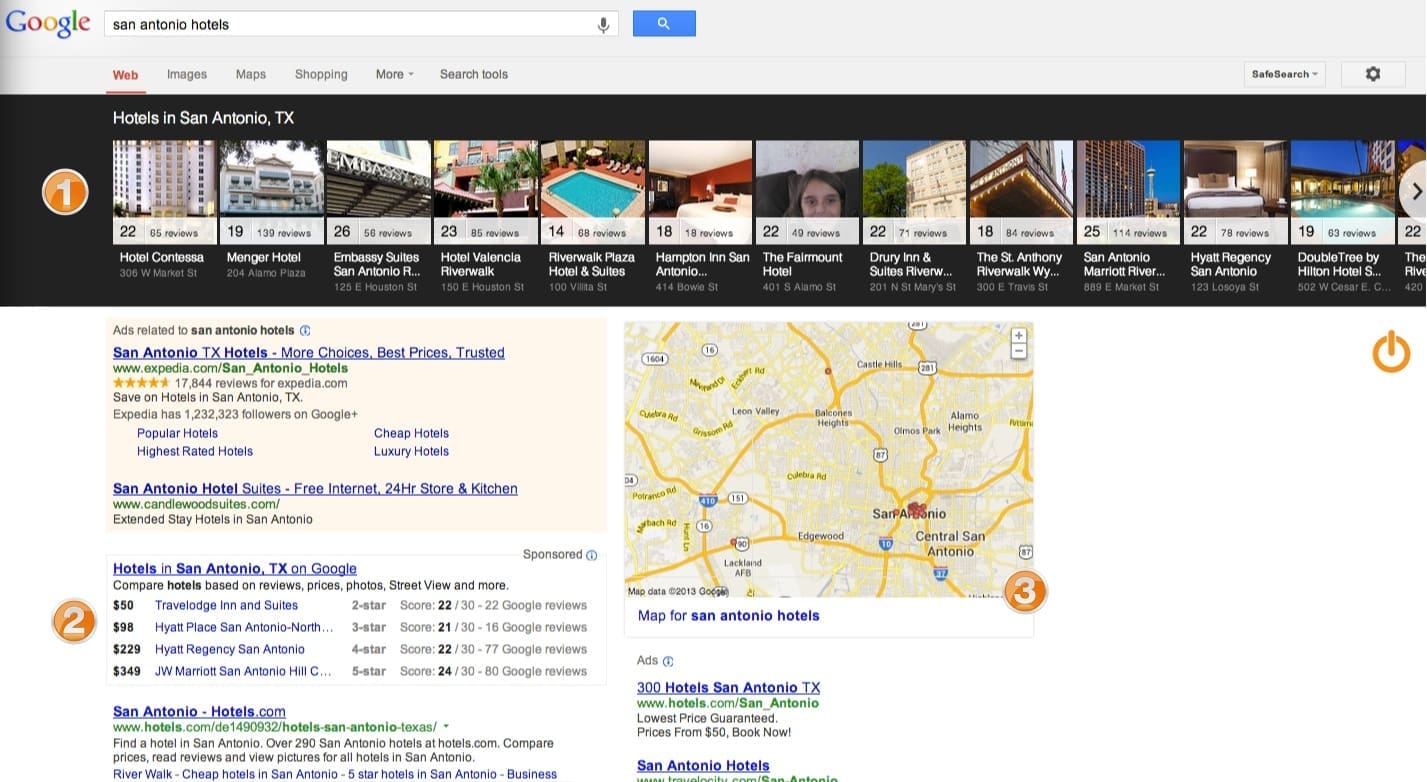
Have you ever wondered just what exactly goes into search ranking factors? For some, the concept seems like an elusive unicorn, an untamed creature that lives somewhere between the realm of reality and magic. For others, it is a frustrating and never ending battle to understand what exactly changed from one algorithm update to the next. Ultimately, there are hundreds of factors that affect how and where your site ranks in search engine results. Unfortunately, only a handful of those factors are things that can actually be controlled.Earlier last week, the folks over at Searchmetrics released a 78 page study exploring what marketers can do to improve site rankings and just how large of a roll these factors play in the larger game of SEO. Thankfully, we at Screen Pilot eat this stuff for breakfast and we have pulled out the highlights for your reading pleasure.Site Structure
- Strong meta description text will help optimize the search engine results page; headings help organize the landing page content. This improves the user experience, click-through rates and bounce rates, which will in turn improve rankings.
- Keywords as part of domain names used to be a heavier factor, but that seems to be less and less important.
- HTTPS encryption is become a more relevant ranking signal for ecommerce sites or for businesses that keep sensitive client information on their servers.
- Brands often rank on the first page of SERPs sometime even occupying the first position. This also signals that brand searches can influence the search results for non-brand searches.
- Domains with a higher SEO visibility also earn higher rankings with their URLs
Takeaway: Technical factors and markup remain important when it comes to search rankings as long as your site is full of good content. The idea of the keywords for ranking is becoming less relevant, however, holistically optimizing topics around rationally associated groups of keywords is increasing in importance. Good URLs are worth their weight in gold, and technically optimizing sites results in greater readability for search engines as well as enhanced user experience. User Experience
- An optimized link structure also maximizes the crawlability of the search bots and hence the flow of the link juice.
- Images placed in content keep users on your site for longer, and also elevate their experience while they are there.
- 8 out of 10 videos in the top U.S. SERPs are from YouTube. Videos are also great tools for social sharing and bringing more traffic to your site.
- Responsive content and site design is of utmost importance. If visitors can’t read your content, then who cares how great it is? They will bounce anyway.
- Be careful with advertisements, especially above the fold. Google gives particularly negative ratings to too much advertisement in the visible area and to pop-ups that hide the entire actual content when the page is retrieved.
- Optimize time on site on your website – use videos, internal links and create engaging content. This increases your website’s quality score, as long as your content is relevant.
- When optimizing your site, consider the bounce rate with respect to time on site. Pages that create bad user signals should be either completely reworked or simply deleted.
Takeaway: While the number of images used on websites has increased in comparison to last year, the number of pages with video integration in the SERPs has fallen. Embedding images and videos is a factor that can considerably enhance the user experience and also drive user signals on your website. The content on higher ranking pages is better structured, contains more interactive elements and is thus more comprehensible and interpretable for both users and the bot.Content
- The difficulty of the text for a page should match the respective target group. If you are teaching beginners, the tone should be more instructional. If you are speaking to experts, the language should be more technical.
- The content of the top 30 webpages is more comprehensive in achieving the purpose of its respective brand.
- The average text length has increased compared with 2014 by around a quarter.
Takeaway: Content is becoming more and more comprehensive, taking its seat at the center of SEO. While the popularity of proof terms has remained unchanged, the percentage of relevant terms on high ranking websites has increased yet further. Webpages with the most relevant content for a search query occupy the top positions. However, just because you focus your optimization on certain keywords or keyword lists does not guarantee a high ranking: the content on your website must support it.Social Signals
- The number of Facebook likes & shares has risen across all examined search result positions.
- The rank correlations between the individual positions are high. Webpages at position 1 have twice as many Facebook signals than pages ranking second.
- The number of tweets and retweets on websites that rank in the top 30 showed a high correlation but not as high as 2014
Takeaway: Social signals definitely play a role in direct traffic, brand awareness, and the overall online performance of a website. Because, good content performs better on social networks – and search engines want to recognize and display good, relevant and up-to-date content.Backlinks
- Statistically speaking, backlinks are still a factor that correlate with high rankings.
- The correlations between the respective individual link ranking factors are high, but are definitely decreasing.
- Links should be viewed in the same way as social signals – as a ranking signal, but also to some degree more a consequence of good rankings instead of their cause.
- In the anchor text of the backlink, the domain name increasingly occurs instead of the keyword. At the same time, fewer backlinks have the homepage as the link target and increasingly refer to subpages.
Takeaway: A number of changes resulting in the decreasing importance of backlinks are related to Google’s desire to combat “unnatural” link formation including include penalties against link networks and their customers as well as its introduction of Penguin in its many forms. Webmasters and marketers are also clearly taking notice as the proportion of nofollow backlinks has increased strongly compared to the previous year. Moral of the story here is that search ranking factors are always changing and brands must be prepared to adapt accordingly. Although the majority of SEO components are not easily controlled (if at all) there are alterations that can be made to improve search engine rankings. Focus your efforts on what you can change, make sure you are adhering to best practices, and take a deep breath. In closing, I will leave you with a quote that should sum up your new approach towards search ranking factors:
“Grant me the serenity to accept the things I cannot change, the courage to change the things I can, and the wisdom to know the difference.”






